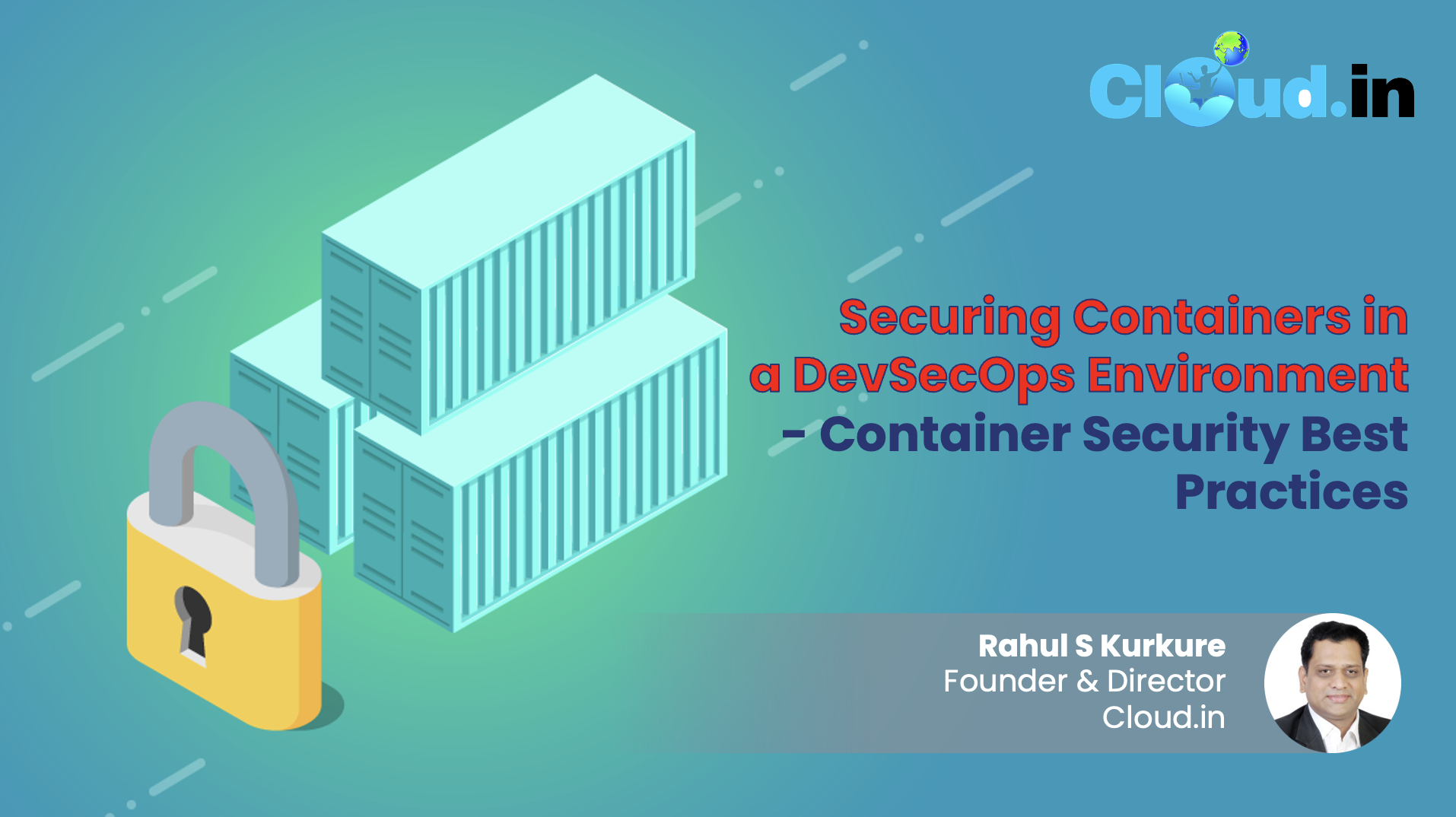Securing Containers in a DevSecOps Environment - Container Security Best Practices - Rahul S Kurkure, Founder and Director of Cloud.in

In recent years, organizations, to remain competitive are continuously enhancing the speed, scalability, flexibility, efficiency, and security of their software development processes. Containerization is helping organizations in achieving this by altering the way software is developed and deployed. Containers allow software developers to deploy applications consistently in a portable manner. It is important to ensure the security of containerized applications in order to protect data and prevent security incidents. Having said that, securing containerized applications is quite complicated and for protecting them from security risks, organizations are compelled to adopt the right set of practices. By integrating container security into the DevOps approach, organizations can address security breaches throughout the software development lifecycle ensuring the security of the applications by design.
There are several challenges with container security that need to be
addressed on time. Security
misconfigurations can expose containers to security breaches. Other pitfalls include a lack of visibility
into container workloads, leveraging of insecure images, the presence of issues
securing the CI/CD pipelines, and uncontrolled communication among containers.
It is critical to integrate Container Security Best Practices throughout the Software Development Lifecycle.
- Implement security measures in the entire
development cycle
This is also called ‘Shift Left’, where the DevOps team puts in efforts to ensure application security at the very early stages of the software development lifecycle. Securing containers by implementing relevant security practices early in the development life cycle will ensure robust container security. Each stage of the CI/CD pipelines should be integrated with vulnerability scanning and security testing. By automating vulnerability scanning and management, security vulnerabilities can be easily detected at every stage, mitigating security risks. By identifying and addressing vulnerabilities right at the outset, organizations can ensure applications are secure by design.
- Secure Image Development
Images from unknown sources may contain malicious code, whereas images
from official repositories are tested and verified ensuring quality and
security. It is critical to use base
images from trusted sources while developing containerized applications. By implementing strict vulnerability scanning
practices and policies, the images can be kept secure.
It is important to check the source code repository of the images and who are the maintainers to confirm their reliability. It is recommended to use signed images as these are less likely to be tampered with, thereby ensuring protection from malicious attacks. Container images should be kept up to date with the latest software updates and security patches.
- Incident Response, Monitoring, and Logging
These are critical components of a strong container security strategy. Implementing container monitoring to detect suspicious activity and potential security breaches is very crucial. A robust incident response plan customized to containerized environments has to be established. Solutions for monitoring and logging to capture container orchestration should be implemented. SIEM solutions can be leveraged to analyze logs, detect and respond to security incidents within a short time. A well-designed incident response plan not only minimizes the impact of security breaches but also ensures quick recovery from incidents.
- Applying the principle of least privilege
This refers to restricting container privileges by granting only the minimum level of permissions any user needs to perform a specific task. By limiting the permissions, the risk of unauthorized access or privilege is minimized with the potential attack surface getting reduced. This can be achieved by implementing access controls using authentication and authorization mechanisms. It is important to establish access controls that provide clarity on who is authorized to access and publish images and who is not, thereby preventing unauthorized users from deleting, modifying, or publishing the images. Access controls can be achieved with strict security policies besides isolating containers from the underlying host system.
- Providing training for the team
Organizations should take all necessary steps to educate the team about container security practices and how to identify and respond to threats. The curriculum should include the fundamentals of container security along with specific policies and procedures required to safeguard the container environment. Security concepts of isolation and access control, container networking, management, and orchestration should be an integral part of the training module. Teaching about the various container tools and why and how there can be leveraged is important too. Furthermore, the team should be kept updated on the latest security trends and techniques.
A range of best practices and tools are to be leveraged to secure
containerized applications. With the
increase in the adoption of DevSecOps and Containerization, organizations
should prioritize security. They can
build and deploy secure containerized applications by investing in the
appropriate tools and solutions and minimizing the risk of security breaches.



